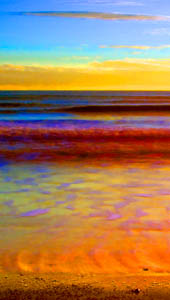Gallery Help - Colour
Monitor setup
It is very difficult to accurately display colours on screen as they will appear in print; different screens/ different computer systems/ different software can all affect how colour is displayed. Every effort is taken to achieve as close a representation as possible.
![]()
The above strip, viewed on a good, properly adjusted monitor you should see a black square on the left, a white square on the right and fifteen shades of grey in between.
If you have not done any colour setup of your monitor then do the following:
Using your monitor controls, set your brightness to 50%, and contrast to maximum. Adjust contrast until you can just see the first grey square net to the back one. adjust brightness until the white square is bright white and the overall picture is comfortable to view.
Even with modern LCD monitors, you can have a colour cast; if the rest of the squares are not neutral grey, but have a colour tinge to them, then you will need to consult your monitors manual on how to adjust this, or take it into account when viewing images on screen.
Information about colour
There is a difference between how colour is created with light on a monitor, TV or projector and how it is created when looking at the printed document or paintings.
A computer monitor works by adding together the 3 primary colours (red, green, blue or RGB) in varying quantities to create different colours and different intensities (very dim to very bright.)
A painting or printed document works by absorbing proportions of the red, green and blue elements of white light hitting the document, and reflecting the rest. So, to show red on a page, we need to absorb the green and blue parts, so that only the red light gets reflected.
You will often see CMYK standing for Cyan, Magenta, Yellow & Black; these are the main primary colours for for full colour printing. Black is used to provide darker colours without having to use as much colour inks.
So, with Printing, cyan absorbs red light, magenta absorbs green light and yellow absorbs blue light.
In order for this light absorbing process to work, you need pure white light to be falling on the print. This does not happen in the real world, even bright sunlight in the middle of summer does not have equal proportions of red, green and blue light; there is also a difference in the mix between daylight, incandescent light bulbs, the energy saving light bulb and LED light sources.
Because of these differences in light falling on a page, the same print will look different under different lighting conditions, and will look slightly different to a monitor screen.
